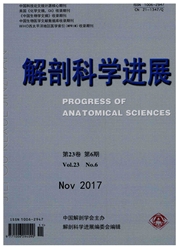

 中文摘要:
中文摘要:
新生儿缺血缺氧性脑病(Neonatal hypoxic-ischemic encephalopathy,HIE)的发病机理牵涉到多种复杂因素,其中免疫炎症反应是其关键因素之一。TLR4(Toll like receptor-4)通过My D88依赖性通路和TRIF依赖性通路调节免疫炎症反应。在大鼠和小鼠脑缺氧缺血后,TLR4通路被激活,增强炎症反应,并加重脑组织损伤;在新生鼠脑组织中可见TLR4的表达;用特异性TLR4激动剂活化TLR4通路可以导致发育时期大脑的白质损伤;敲除TLR4基因可增加少突胶质细胞对LPS导致的细胞损伤的耐受;TLR4对神经发生和神经轴突生长的调节起关键作用,并且调控干细胞的增殖和分化。TLR4信号通路可能参与HIE的发生发展和继发性脑损伤的免疫炎症反应过程及脑损伤后的神经修复的调控。
 英文摘要:
英文摘要:
The pathogenesis of neonatal hypoxic ischemic encephalopathy(HIE) involves many complicated factors. One of the key factors is immune inflammatory reaction. TLR4 (Toll like receptor 4) mediates immune inflammatory responses through MyD88-dependent and TRIF-dependent pathways. TLR4-mediated signaling pathways were activated, and the inflammatory responses were enhanced, as a result, aggravated ischemia induced brain damage. The expression of TLR4 in newborn mouse tissues was observed. The specific TLR4 agonist can lead to the white matter damage in the developing animal brains, TLR4 gene knock out can increase the tolerance of oligodendrocyte to the cellular damage induced by LPS (lipopolysaccharides), TLR4 plays an important role in neurogenesis and neural axon growth, and also regulates the proliferation and differentiation of stem cells. Therefore, the TLR4 mediated signaling pathways may be involved in the occurrence and the development of HIE, the immune inflammatory responses in the secondary brain injury, and the regulation of neurogenesis and neurorepair after brain injury.
 同期刊论文项目
同期刊论文项目
 同项目期刊论文
同项目期刊论文
 期刊信息
期刊信息
